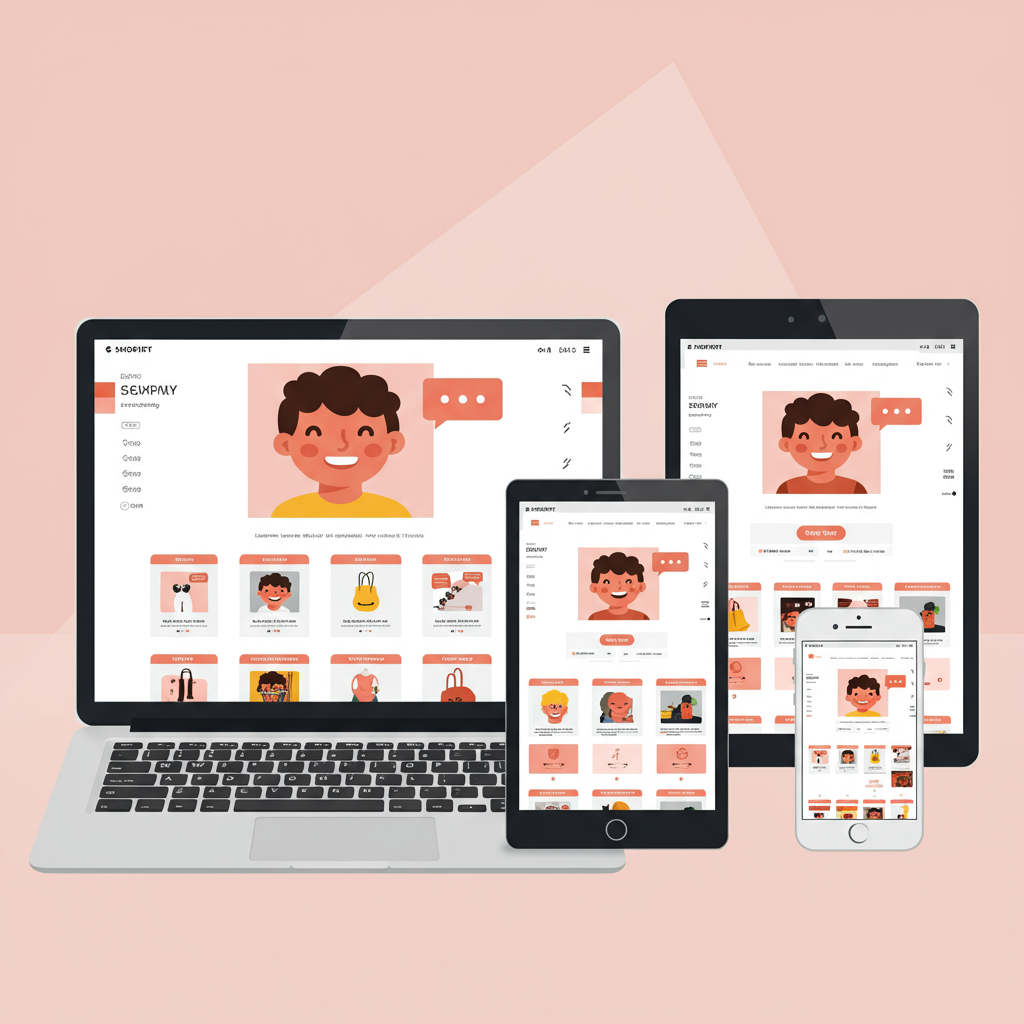As a merchant, I’m sharing the strategies I believe will transform your store’s first impression into a powerful conversion engine for the coming year.
As a merchant, I know the homepage of your Shopify store isn’t just a digital storefront; it’s the grand entrance, the first impression, and often the make-or-break point for converting a casual browser into a loyal customer.
For 2025, the landscape of e-commerce is evolving rapidly, and your homepage needs to evolve with it. I’m here to share some crucial design tips that I believe will set your store apart and drive sales.
My first and perhaps most critical piece of advice for 2025 is to embrace a truly mobile-first design philosophy. With the majority of online traffic now originating from mobile devices, your homepage *must* look and function flawlessly on smartphones and tablets.
This isn’t just about responsiveness; it’s about optimizing layouts, image sizes, and navigation specifically for smaller screens. I always recommend testing your site extensively on various mobile devices.
Next, let’s talk about speed. In 2025, slow loading times are a death knell for conversions. Google’s Core Web Vitals continue to be paramount, and I’ve seen firsthand how even a one-second delay can significantly impact bounce rates.
I focus on optimizing images, leveraging browser caching, and minimizing unnecessary scripts. Shopify’s infrastructure is robust, but it’s our responsibility as merchants to ensure our themes and apps aren’t bogging things down.
Personalization is no longer a luxury; it’s an expectation. I believe that by 2025, customers will expect your homepage to feel tailored to their interests, even on their first visit.
Consider using AI-powered tools or Shopify apps that can dynamically display product recommendations, recently viewed items, or even personalized banners based on user behavior or referral source.
Visual storytelling is another area where I see immense potential. High-quality imagery and engaging video content are non-negotiable. Your homepage should immediately convey your brand’s aesthetic and value proposition.
I often advise using hero sections with compelling visuals that instantly grab attention, perhaps showcasing your best-selling products or a lifestyle shot that resonates with your target audience.
Clear and compelling Call-to-Actions (CTAs) are vital. I’ve found that many merchants bury their CTAs or make them too generic. For 2025, your CTAs need to be prominent, action-oriented, and strategically placed.
Think “Shop Now,” “Discover Our Collection,” or “Learn More” – guiding the user effortlessly to the next step in their journey. I always ensure my CTAs stand out visually.
Building trust is paramount. In an increasingly crowded online marketplace, I rely heavily on social proof and trust signals on my homepage. This includes customer reviews, testimonials, security badges, and clear return policies.
Displaying logos of payment providers or secure checkout badges can significantly boost confidence. I make sure these elements are visible without being intrusive.
Accessibility is not just a legal requirement; it’s good business. I strive to ensure my homepage is usable by everyone, regardless of ability. This means proper alt text for images, keyboard navigation, and sufficient color contrast.
An inclusive design approach broadens your potential customer base and reflects positively on your brand. I view it as a fundamental aspect of modern web design.
User experience (UX) should be at the heart of every design decision. I constantly ask myself: Is this easy to navigate? Is the information clear? Can a customer find what they need quickly?
A clean, uncluttered layout, intuitive navigation menus, and a logical flow of information are what I aim for. Don’t overwhelm your visitors; guide them.
For brands with a strong ethical or sustainable stance, I believe 2025 is the year to prominently feature this on your homepage. Consumers are increasingly making purchasing decisions based on a brand’s values.
If your brand is eco-friendly, fair trade, or gives back to the community, I encourage you to weave this narrative into your homepage’s visual and textual content.
Interactive elements can significantly boost engagement. I’ve experimented with quizzes that help customers find the right product, or even simple configurators for customizable items.
These elements not only entertain but also provide valuable data and guide customers towards a purchase. I find they make the shopping experience more dynamic.
Seamless navigation is crucial. Your main menu should be intuitive, and I always ensure there’s a clear path to product categories, about us, contact, and any other essential pages.
A well-designed footer, though often overlooked, is also a key navigation tool. I use it for less critical but still important links like FAQs, privacy policy, and social media.
Don’t forget about SEO. While the homepage isn’t typically optimized for specific product keywords, I ensure my title tags, meta descriptions, and heading structures are well-crafted to reflect my brand and overall purpose.
I also make sure my homepage content is rich enough to provide context to search engines without being overly keyword-stuffed.
Finally, I can’t stress enough the importance of A/B testing. What works for one store might not work for another. I constantly test different hero images, CTA button colors, and layout variations.
Data-driven decisions are the most effective. I use Shopify’s analytics and other tools to understand user behavior and refine my homepage design iteratively.
Looking ahead, I anticipate even greater integration of augmented reality (AR) for product visualization and more sophisticated AI for hyper-personalization directly on the homepage.
Staying agile and open to new technologies will be key to maintaining a competitive edge. I always keep an eye on emerging trends.
Your Shopify homepage in 2025 needs to be a dynamic, high-performing, and deeply personalized experience. It’s an ongoing project, not a one-time setup.
By focusing on mobile-first design, speed, personalization, compelling visuals, and clear calls to action, I am confident you’ll create a homepage that not only attracts but also converts.
I hope these insights have been helpful for your Shopify store. What do you think about these tips for designing your homepage in 2025? I’d love to hear your thoughts!






